Amstrad CPC[edit]
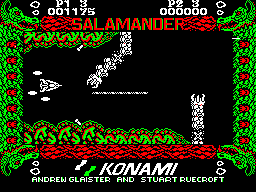
Published by Imagine Software in 1988. For some reason, this version was simply converted from the Sinclair ZX Spectrum version without taking any advantage of the CPC's more powerful hardware.
Commodore 64[edit]

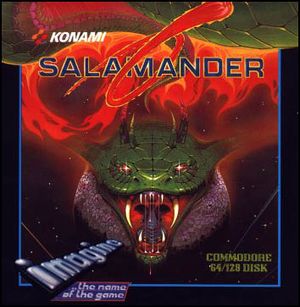
Published by Imagine Software throughout Europe in 1988, and published by Konami themselves in the United States in the same year. Appears to contain the first three levels and the final level, omitting the fourth and fifth stages. Does not have two player simultaneous capability.
Famicom[edit]
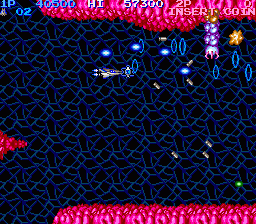

Developed and published by Konami in 1987. Despite the arcade's automatic power up system, Salamander on the Famicom reverts to the traditional Gradius power-up system. The stages are slightly resequenced and the mostly empty stages are replaced with two all-new stages. It was released as Life Force in the United States. See the Life Force guide for more information on this conversion.
MSX[edit]
Developed and published by Konami in 1987. The MSX version of Salamander is even more dramatically altered than the Famicom version, with the story line almost entirely rewritten. Stages are completely redesigned and the power up system is a little more complicated. Just as with Gradius, the MSX accomplishes a very poor scroll on screen, but the series was popular despite the technical drawback.
-
screen
-
Japanese box
-
European box
PC-Engine[edit]

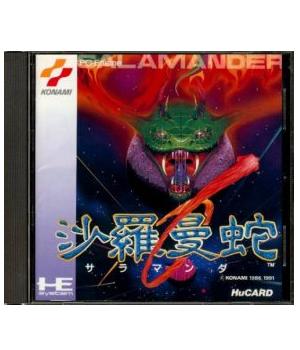
Developed and published by Konami in 1991. Just as with Gradius, it is a near arcade-perfect conversion, missing only the most technically difficult aesthetic aspects such as parallax scrolling in the background, and the length of the Laser weapon. Just about all other aspects of the arcade game, including the general stage strategy, remains in tact.
Sharp X68000[edit]

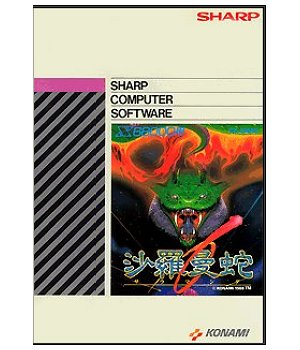
Developed and published by Konami in 1988. Since Gradius was chosen as the game that would ship with the Sharp X68000 to prove how accurately it could play arcade conversions, Salamander was a natural choice for the machine. Once again, the port is pretty much a spot-on pixel-accurate conversion of the arcade game.
Sinclair ZX Spectrum[edit]
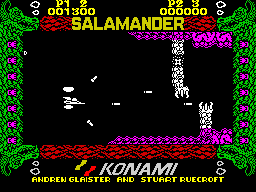
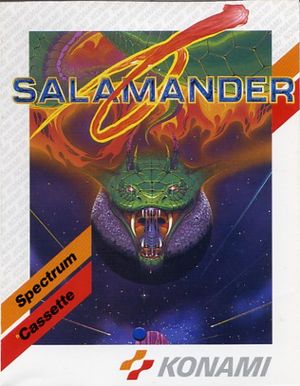
Published by Imagine Software in 1988. Due to the Spectrum's limited memory and video capabilities, this port is extremely simplified and reduced in color. Only four levels are present.


